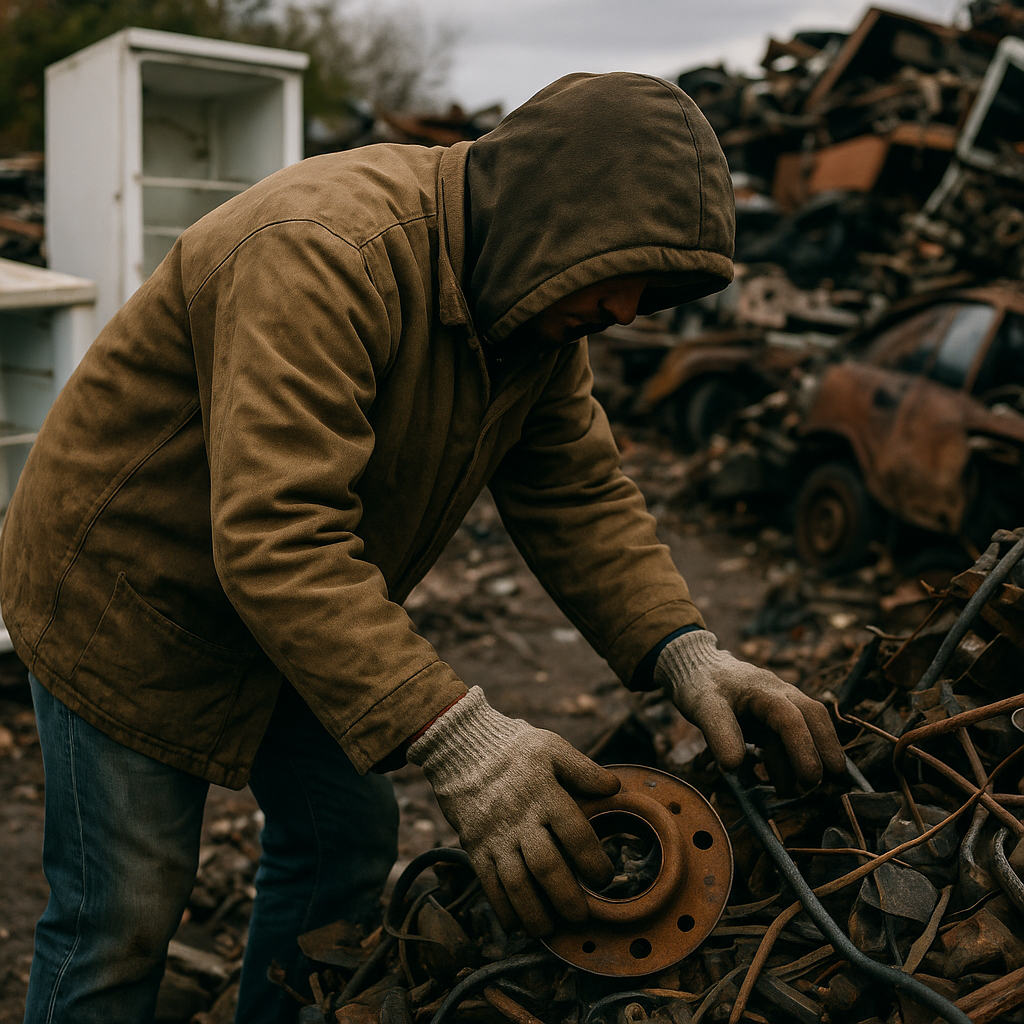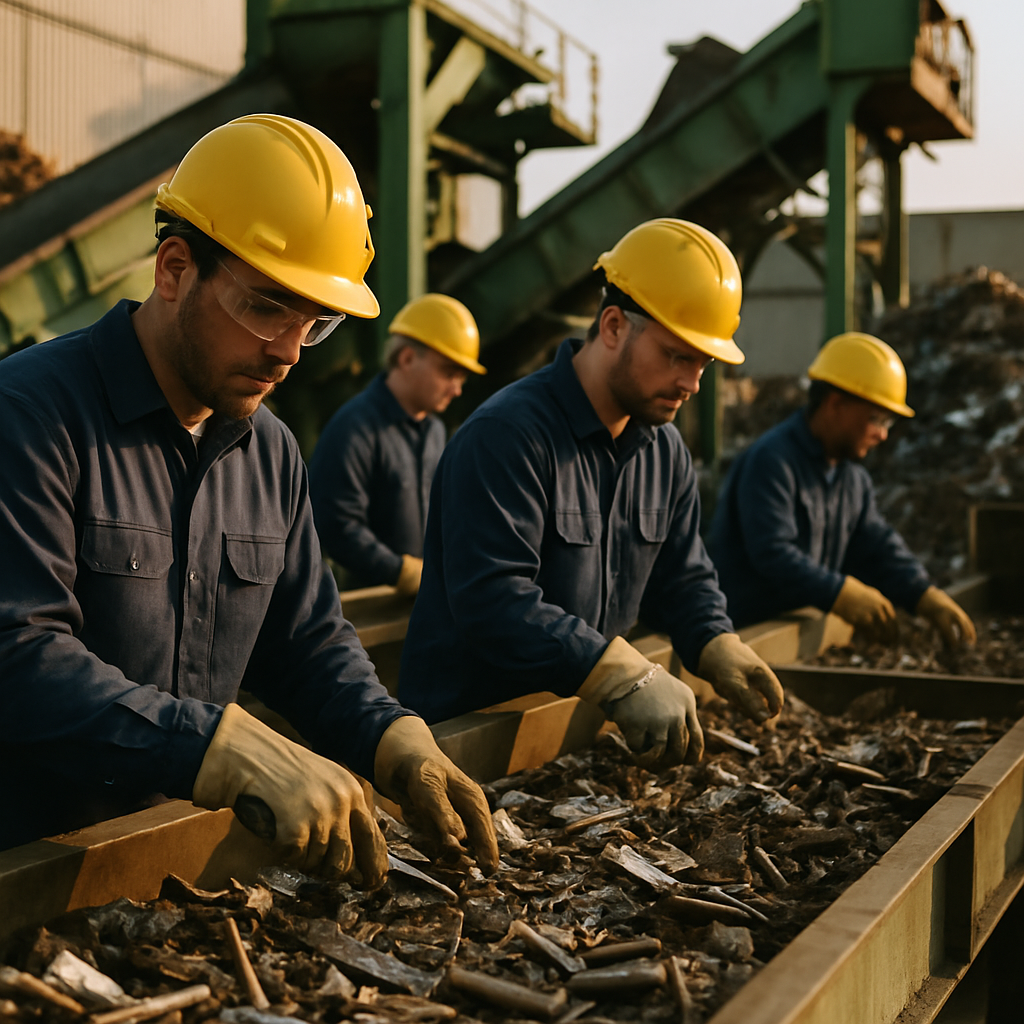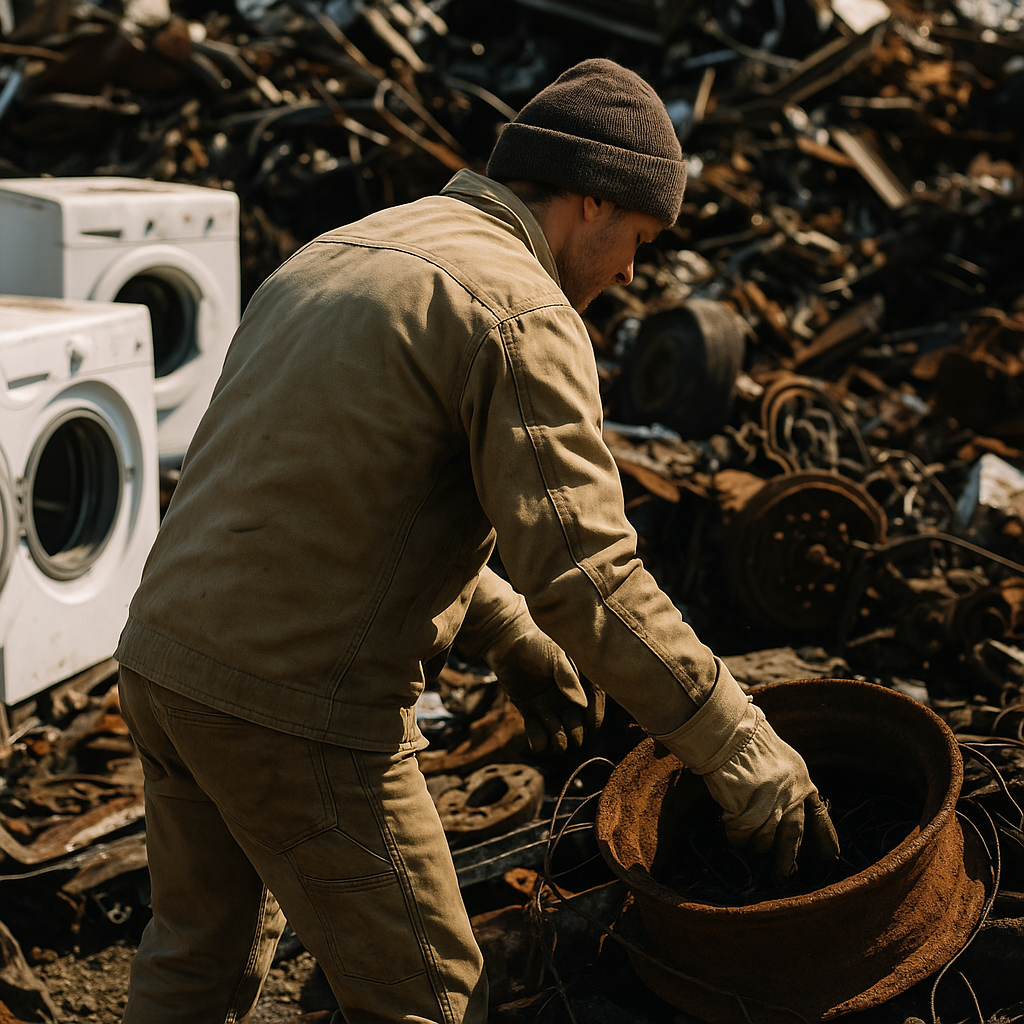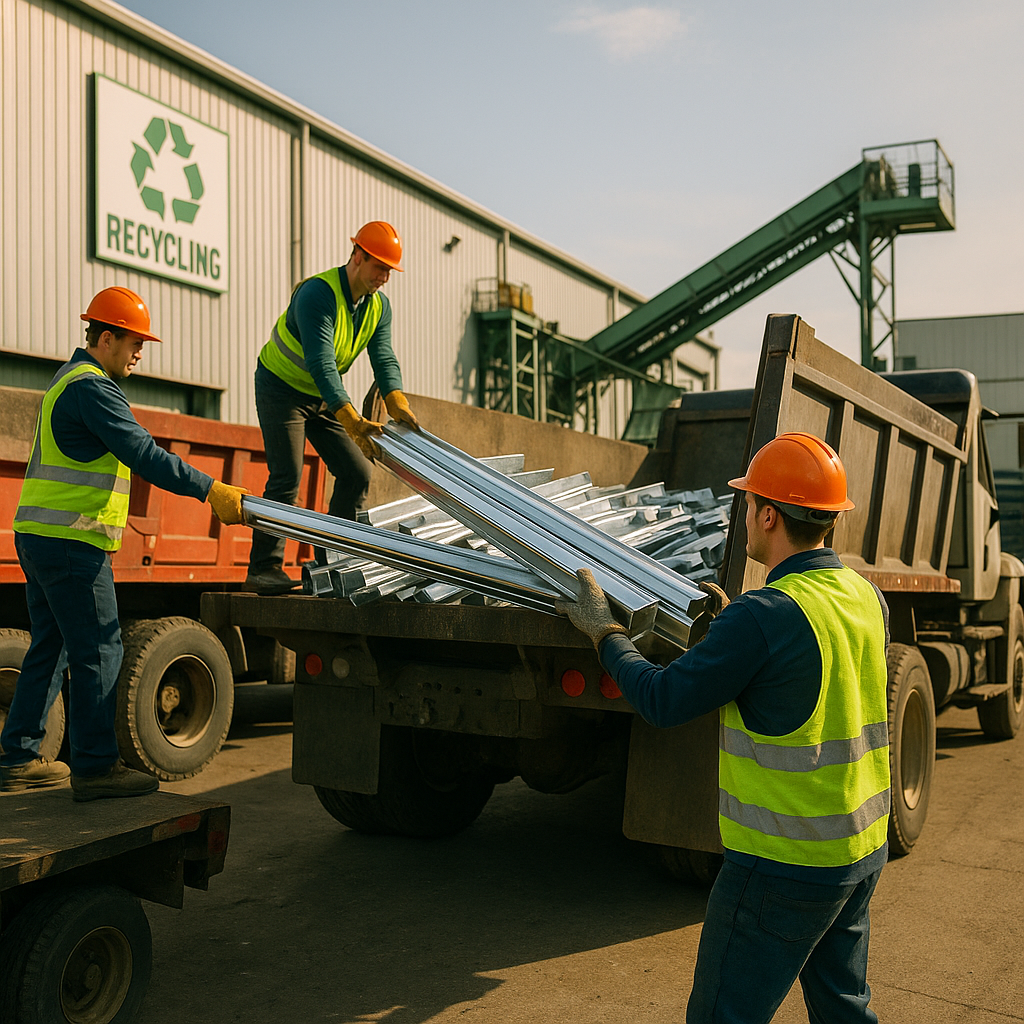5901 Botham Jean Blvd, Dallas, TX 75215
Salvage Metal Importance: Benefits, Recycling Process, and Economic Impact
September 27, 2025Salvage metal, often referred to as scrap metal, comprises used metals that have outlived their initial purpose but remain valuable for recycling. These discarded materials are crucial in our industrial economy, providing essential raw materials for manufacturing new products without depleting natural reserves.
The salvage metal category includes everything from old appliances and construction materials to vehicle parts and manufacturing byproducts. When collected properly, these materials are vital sources for producing steel, copper, aluminum, and other industrial metals that support modern manufacturing.
The value of salvage metal lies in its sustainability. Unlike many resources that degrade with use, metals retain their chemical and physical properties even after processing. This unique characteristic makes metals infinitely recyclable, creating a continuous loop of use that significantly reduces the need for environmentally harmful mining operations.
Where Can You Find Salvage Metal?

Salvage yards are ideal places to find affordable used metal. These facilities collect and sort various metal items, offering everything from structural steel to decorative pieces. Most salvage yards organize their inventory by metal type, making it easier to locate specific items for your project.
Fabrication and machine shops often maintain ‘drop’ piles or bins filled with leftover metal pieces. These shops accumulate cuts and remnants that are too small for commercial purposes but perfect for smaller DIY projects. Many shop owners sell these scraps at reduced prices to clear space in their facilities.
Local construction sites discard valuable metal materials during demolition or renovation phases. With proper permission, you can sometimes collect metal items like pipes, ductwork, or structural components otherwise destined for landfills. Always ask before taking anything from a construction site to avoid trespassing issues.
Household Sources of Salvage Metal
Your home likely contains numerous items that can be repurposed for their metal content. Common household appliances are particularly valuable sources of recyclable metals. Washing machines and dryers contain steel frames, copper wiring, and sometimes aluminum components. Refrigerators include copper tubing, aluminum shelving, and steel casings.
Kitchen items are also rich sources of salvage metal. Old pots and pans are often made from stainless steel, copper, aluminum, or cast iron—all valuable and recyclable metals. Even small appliances like toasters, microwaves, and blenders have motors with copper windings and other metal components worth salvaging.
- Old grills (steel frames, aluminum components)
- Metal furniture (chairs, tables, bed frames)
- Window air conditioning units (copper, aluminum)
- Plumbing fixtures (brass, copper)
- File cabinets and shelving units (steel)
- Electrical equipment with copper wiring
- Door hardware and fixtures (brass, steel)
- Metal cookware (stainless steel, cast iron)
Thrift stores and garage sales often offer metal items at low prices. Many sellers do not recognize the value of metal objects beyond their immediate use, creating opportunities to purchase items specifically for their metal content. Look for heavy metal objects sold at low prices.
Community resources can also yield opportunities for salvage metal. Friends and family members undergoing renovations or replacing appliances may give away metal items they no longer need. Some municipalities have metal recycling programs where residents can pick up discarded items. Local online marketplaces and community boards frequently feature free metal items from people looking to clear space.
When searching for salvage metal, timing is crucial. Neighborhood cleanup days, when residents place unwanted items at the curb, present excellent opportunities to collect discarded metal objects. Early morning searches typically yield the best results before other scrappers arrive.
How is Salvage Metal Recycled?

Salvage metal recycling transforms discarded materials into valuable resources through a systematic process. This multi-stage operation ensures metal waste becomes usable raw material rather than ending up in landfills. Here’s a look at each stage of the journey from scrap to new product.
Collection: The First Step
The recycling process begins with the collection from various sources. Scrap yards receive metal from demolition sites, manufacturing facilities, and consumer drop-offs. Many municipalities and businesses have collection programs to properly channel metal waste into the recycling stream.
Efficient collection directly impacts recycling rates. Properly gathering and transporting materials to processing facilities prevents valuable resources from ending up in landfills, where they could leach harmful substances into soil and groundwater.
Sorting: Separating by Type and Composition
At the recycling facility, metals undergo careful sorting, a crucial step that determines the quality and value of the final recycled product. Ferrous metals containing iron are separated from non-ferrous metals like aluminum, copper, and brass.
Common sorting techniques involve powerful magnets to attract ferrous metals. Non-ferrous metals require more sophisticated methods, including sensor-based systems that detect differences in density, color, and other properties.
Shredding: Size Reduction for Processing
After sorting, metals are fed into industrial shredders that break them into smaller, manageable pieces. These machines use hydraulic power to crush even large metal objects into fragments. Shredding increases the metal’s surface area, making the subsequent melting phase more efficient and less energy-intensive.
Modern shredding facilities can process tons of metal per hour. The size and type of shredder used depend on the specific metal and its intended end use.
Melting: Transformation with Heat
The shredded metal is transported to furnaces, where it’s melted at high temperatures. Different metals require various melting points—aluminum melts at around 1,220°F, while steel needs temperatures above 2,500°F. Specialized furnaces are designed to handle specific metals efficiently.
This phase consumes significant energy but far less than producing metal from raw ore. Steel recycling, for instance, uses about 75% less energy than creating new steel from iron ore.
Purification: Removing Contaminants
During melting, impurities rise to the surface or sink to the bottom of the molten metal. Recyclers use techniques to purify the metal, including adding chemicals that bind with contaminants. These impurities are then skimmed off or filtered out.
Some facilities use electrolysis to achieve higher purity levels. This process uses an electric current to separate pure metal from impurities through a chemical reaction.
Solidification: Forming New Raw Materials
The purified molten metal is poured into molds or cast into various forms, including ingots, bars, sheets, or coils. These standardized shapes make the recycled metal easy to transport and use in manufacturing processes. The metal is cooled in a controlled environment to ensure consistent quality and structural integrity.
Many steel mills and aluminum plants now incorporate continuous casting technology. This allows molten metal to flow directly into the final product form without intermediate steps, improving efficiency and reducing energy consumption.
Manufacturing: From Recycled Metal to New Products
The final stage turns recycled metal into new products. Manufacturers purchase the processed metal and use it as raw material to create everything from construction beams to automobile components, appliances, and packaging materials.
Recycled metal maintains the same properties and performance characteristics as virgin metal, making it equally suitable for manufacturing. Many products today contain a high percentage of recycled content, which manufacturers often highlight to appeal to environmentally conscious consumers.
What Are the Benefits of Salvaging Metal?

Salvaging metal has a significant impact, extending beyond simple recycling. Its benefits touch almost every aspect of our environment and economy, making it an essential sustainability practice.
Environmental Advantages
The environmental benefits of metal recycling are substantial. Recycling metal instead of mining new materials drastically reduces habitat destruction, soil erosion, and water pollution associated with extraction activities.
Recycling conserves our planet’s finite resources. Every ton of steel recycled saves approximately 2,500 pounds of iron ore, 1,400 pounds of coal, and 120 pounds of limestone. This conservation is crucial as pressure on natural resources increases.
Recycling significantly reduces landfill waste. Metals take centuries to decompose, occupying valuable space and potentially releasing harmful substances into soil and groundwater. By diverting metals from landfills, we protect local ecosystems and water sources.
Energy Conservation
The energy savings from metal recycling are considerable. Recycling aluminum saves 95% of the energy needed to produce new aluminum from bauxite ore. Steel recycling saves 60-74% of the energy compared to virgin production.
These energy savings lead to reduced greenhouse gas emissions. According to the EPA, recycling one ton of steel prevents approximately 1,000 to 1,500 pounds of carbon dioxide from entering the atmosphere. Studies indicate that recycling steel and aluminum can reduce greenhouse gas emissions by 86% and 95%, respectively.
Water conservation is another crucial benefit. The Northeast Recycling Council reports that using recycled steel results in 40% less water consumption. Producing metal from raw ore requires extensive water resources, whereas recycling significantly reduces this demand.
Economic Impact
The scrap metal recycling industry is a powerful economic driver. According to the Institute of Scrap Recycling Industries, the sector generates over $105 billion in economic activity annually and supports about 500,000 jobs in collection, processing, and manufacturing.
This economic impact also includes government revenue. The industry contributes approximately $10.3 billion in tax revenues annually to federal, state, and local governments, supporting essential services like education, emergency services, and infrastructure projects.
Recycled scrap commodities are major export products, sold to over 160 countries worldwide. This contributes nearly $24 billion in sales to the U.S. economy and bolsters our global trade position.
Cost Reduction Across Industries
Manufacturers experience substantial savings by using recycled metals instead of virgin materials. The processes of mining, extraction, and refining virgin metals significantly increase production costs, while recycled materials require less processing.
The energy conservation translates into cost benefits. Recycling aluminum uses only 5% of the energy needed to produce primary aluminum from raw ore, allowing manufacturers to achieve significant savings in production expenses.
Recycled metals also help companies stabilize budgets against volatile global metal markets. While virgin material prices can fluctuate dramatically due to supply chain disruptions, recycled materials typically offer more consistent pricing, aiding long-term planning.
Personal Income Opportunities
For individuals, salvaging metal can offer valuable income. Scrap yards pay varying rates for different metals, with non-ferrous metals like copper, brass, and aluminum generally fetching higher prices than ferrous metals containing iron.
The value of scrap metal changes with market conditions, but selling items like obsolete appliances, unused fixtures, or electronic waste can yield considerable returns. Instead of paying to discard these items at landfills, recyclers can convert their scrap into cash.
Common household items often contain valuable metals that are easily overlooked. For instance, Christmas lights contain copper wire, while toasters feature both copper components and a steel body. Even aluminum cans from beverages can be collected and sold for recycling.
By understanding which metals are most valuable and finding reputable buyers, individuals can turn what would otherwise be waste into income, while contributing to environmental conservation.
Conclusion: The Future of Salvage Metal

With the growing scarcity of natural resources and heightened environmental awareness, salvage metal recycling is set to play a crucial role in ensuring a sustainable future. The metal recycling industry is rapidly evolving, with innovations such as AI-powered sorting systems and advanced processing methods improving efficiency and decreasing environmental impact. These advancements make metal salvage more accessible and profitable.
Participating in metal salvage—whether to source cost-effective materials, earn extra income, or reduce your environmental footprint—supports a circular economy that preserves valuable resources. Recycling metal can save up to 95% of the energy needed to produce new aluminum and 75% for steel, significantly reducing greenhouse gas emissions and minimizing landfill waste. For your metal recycling needs, contact Okon Recycling at 214-717-4083.
